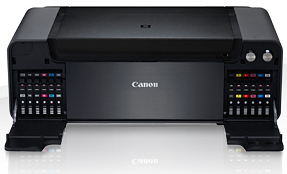|
Last
Updated - 12th August 2013
Fine Art – The photograph identifies with the photographers vision of
the scene and invariably is altered to express his vision. This can be
accomplished by using specific types of cameras and lenses with film,
invariably black and white film which offer a broad dynamic range and
tonality to the negative and the finished print. Classical type lenses
are well sought after for Fine Art photography and the draw of the lens
plays an important part in the final production. Some lenses are very
sharp and some produce a softened almost a glow like appearance, yet add
a subtle sharpness to the image.
The photographer can exert a greater control in expressing his vision
by attaching filters to the camera
lens to alter the lighting and mood. Printing of the film negative is
accomplished in the darkroom using an enlarger and chemicals to develop
the print.
In this digital age, photographers are using digital cameras and are
turning more and more to digital post processing of their camera ‘RAW’
image files using Adobe and PhaseOne software and producing the final
prints using an ink jet printer.
Most Fine Art photographers’ have found a ‘niche subject’ to express
their style, their vision and invariably the final image is so altered
that it bears only a slight likeness to the original scene. This type of
Fine Art photography is usually digitally edited by a photographer with
artistic skills using a pen tablet to draw over the original digital
image file (a digitally scanned film negative or a digital camera image
file) to produce a form of hybrid photograph/painting. However, there
are photographers who are capable of producing Fine Art images which
have not been altered in any way but are reflective of a scene that the
photographers has spent a great deal of time and patience waiting for
the optimum light and mood before taking the shot.
There is nothing quite like a print on the wall, it is singular, it
captures that moment in time and it stimulates conversation. Whether it
is hanging
in a gallery or a hallway or living area it should last the
test of time (at least 100 years) without fading.
Some photographers prefer a portfolio
containing their best work in large prints
which invariably are in monochrome fine art form and bound in a nice
book, usually leather. In any case, the paper has to
be of the best quality and pigment ink is used for long life and to bring out the
tonality, especially the layers of grey scales.
Printer
The printer is important, unless
 the actual printing process is to be
done by a professional printing company. Many photographers print their
own work at home and sell limited editions of the print on the Internet.
There are many types of printer available but my choice would be the
Canon Pixma Pro-1 the actual printing process is to be
done by a professional printing company. Many photographers print their
own work at home and sell limited editions of the print on the Internet.
There are many types of printer available but my choice would be the
Canon Pixma Pro-1
The Canon Pixma Pro-1 has a
very large footprint and should be situated on a stable platform, it has
an ethernet port so it can be positioned away from the desktop. The
printer delivers the very best prints (maximum size 13" x 19")
when used in combination with ICC profiles and Canon have included
a free software download to use for creating profiles.
Art Paper
Hahnemühle are excellent for
'Fine Art' paper - check out
this video from Adorama -
More information at -
Hahnemühle FineArt
Associated Articles -
If you have enjoyed this article - please donate to my
Charity of Choice - The Sick Kids
Richard Lawrence
Scotland
United Kingdom
Back to Articles Page |
